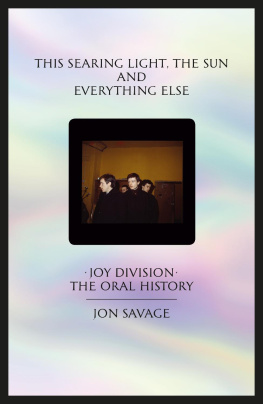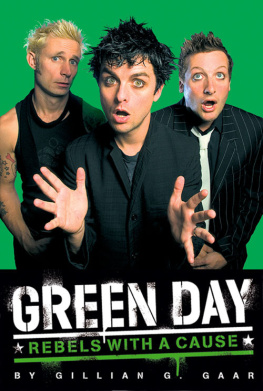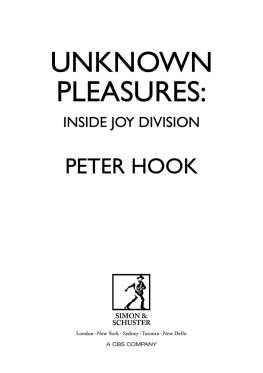JAMerica
ALSO BY PETER CONNERS
Nonfiction
Growing Up Dead:
The Hallucinated Confessions of a Teenage Deadhead
White Hand Society:
The Psychedelic Partnership of Timothy Leary & Allen Ginsberg
Poetry
The Crows Were Laughing in Their Trees
Of Whiskey and Winter
Fiction
Emily Ate the Wind
PP/FF: An Anthology (editor)

Copyright 2013 by Peter Conners
All rights reserved. No part of this publication may be reproduced, stored in a retrieval system, or transmitted, in any form or by any means, electronic, mechanical, photocopying, recording, or otherwise, without the prior written permission of the publisher. For information, address Da Capo Press, 44 Farnsworth Street, 3rd Floor, Boston, MA 02210.
Designed by Jeff Williams
Set in 12 point Fairfield LT by The Perseus Books Group
Library of Congress Cataloging-in-Publication Data
Conners, Peter H.
AMerica: the history of the jam band and festival scene / Peter Conners.
pages cm
Includes bibliographical references and index.
ISBN 978-0-306-82239-1 (e-book) 1. Jam bandsUnited StatesHistory. 2. MusiciansUnited StatesInterviews. 3. Popular musicUnited StatesHistory and criticism. I. Title.
ML3477.C665 2013
781.6407873dc23
2013012646
First Da Capo Press edition 2013
Published by Da Capo Press
A Member of the Perseus Books Group
www.dacapopress.com
Da Capo Press books are available at special discounts for bulk purchases in the U.S. by corporations, institutions, and other organizations. For more information, please contact the Special Markets Department at the Perseus Books Group, 2300 Chestnut Street, Suite 200, Philadelphia, PA 19103, or call (800) 810-4145, ext. 5000, or e-mail .
10 9 8 7 6 5 4 3 2 1
For the roadies, the crew, the staff
with the Work laminates who bring the music to the stage

Contents
LETS GET THIS OUT OF THE WAY. I apologize in advance to any bands who feel themselves unfairly lumped into the jam band category as a result of this book. Personally, I sympathize completely with an artist not wanting to be pigeonholed. The tools, the instruments, the genres, and traditions are all therewhy settle for limiting yourself within prefab borders?
The flipside is that jam band is a tremendously useful label when used responsibly. It is not, however, useful as shorthand for concert or album reviews that prematurely write off the work under consideration as throwback hippie music. It is never useful when accompanied by the adjective noodling. Hippies and noodling are lazy signifiers tossed up to fill in the vacuum of word-count deadlines. I have never once seen a worthwhile guitar player noodle. And I saw the Grateful Dead. A lot. To describe a guitarists technique as noodling is to throw up your hands and retreat from a deeper layer of guitar playing. Those noodling players usually have ear-melting chops and musical knowledge that inevitably leads to improvisational playing, a chance to test those skills by chasing them far enough into the unknown that you can start driving them back again through an elusive, shape-shifting soundscape.
At the core of all jam bands is a dedication to improvisation as a chance to create a unique, spontaneous, artistic/musical event shared between band and artist. A jam band cannot reach that point without the energy of the audience. Nor can the audience reach it without the band. That chance to go there and get off on the music is the product of a shared agreement between the band and the fan. That singular, shared musical experience is the beating heart of the jam band scene.
Unfortunately, the jam band label has too often been used as a scalpel to cut out that beating heart. So lets begin by breaking away from a one-dimensional view of the term and look at the characteristics these so-called jam bands share:
1) Dedication to creating a singular musical event shared by band and audience generally driven by improvisational moments.
1.a.) My instinct is to state that a certain level of musicianship is necessary to be considered a jam band. The truth is that many jam band musicians are the best schooled (formally or informally) and experienced (road tested) youll find outside of an orchestra pit. Howeverand particularly in the Americana strain of jam band under which Id include Donna the Buffalo and Railroad Earththere is affection for the less polished, rougher-hewn, homemade, or old time sound. In describing Donna the Buffalo, David Gans sums up this ethos nicely in his interview: No pretense of instrumental virtuosity, no shredding solos, no wankery whatsoeverjust a deep, deep, deep groove and spiritually positive songs that make you glad to be alive and an audience thats all right there with you. In these cases overt shows of musicianship would only detract from the larger performance. That said, we must also acknowledge the severe vocal limits many jam band singers suffer from. They eek out a ragged but right way through their vocals by creating their own signature squawks and squalls, and the music becomes intertwined withif not defined bythese limitations. But these limitations can also leave many jam bands sounding amateurish and, thus, open to criticism of their overall musicianship. Ironically some of the weakest vocals can come from the most skilled musicians. In the end, other than an ability to improvise, its best not to assume a specific level of musicianship when constructing a jam band definition.
2) Emphasis on live performance over recorded works. Bands that encourage taping of their performances reinforce this focus.
3) Conscious effort by the band to connect with a grassroots following of fans. This, naturally, implies reciprocity in the fans effort to connect; however, that type of connection appears in every genre of music. The difference in the jam scene is that the fans become a vitally important part of experiencing the band; symbols, rituals, slang, and esoteric history become tickets to fully understanding the band itself. In the process the fans become so closely identified with the band that they often evolve their own names (e.g., Deadheads, Phishheads, The Herd, Spreadheads, etc.) that, simultaneously, link them to the band, make them a more coherent group, and begin to define the individuals even outside of the musical realm.
All of the bands included in this book are, according to my definition, either jam bands or central to the jam band story. Over the two years it took to conduct these interviews I met almost no musicians who embrace that label without reservation. In fact, many made it clear at the outset that they either wanted to distance themselves from the label or had only grudgingly accepted it. There were certainly a handful of bands and artistsperhaps even your favoritesthat declined (always through their management) to be interviewed for this book despite being clearly associated with the jam band scene. Was that a result of wanting to distance themselves from the jam band label? In some cases, yes, that was my impression. Whatever the reason, if your favorite jam band isnt interviewed here, theres a good chance it wasnt for lack of trying. But as is always the case in jam band land, the show must go on. In cases in which I felt that the band or artist was inevitable as part of a jam band discussion, excerpts of previously published interviews were inserted into
Next page







